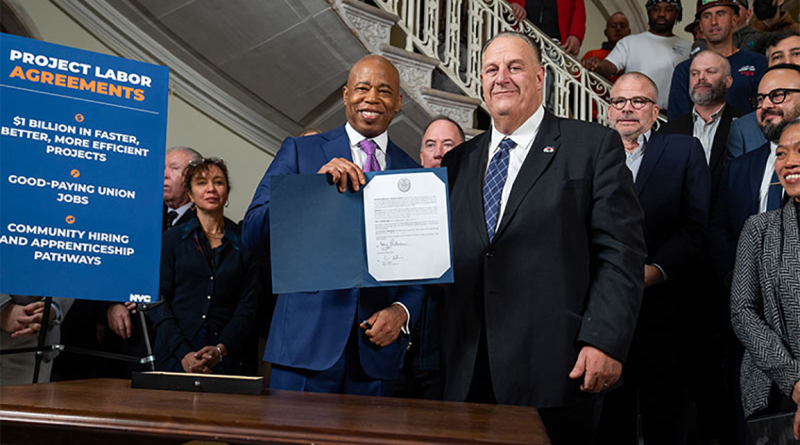$1 Billion in NYC Projects to Transform Neighborhoods and Communities
A billion-dollar initiative is set to reshape New York City’s neighborhoods, transforming urban development and prioritizing equitable opportunities. Spearheaded by the redevelopment of Willets Point in Queens, this effort includes over $1 billion in construction projects. The plan introduces design-build delivery methods and prioritizes hiring from underserved communities while strengthening collaborations with minority- and women-owned business enterprises (MWBEs).
Central to the transformation is the Willets Point redevelopment, a landmark project blending affordable housing, retail spaces, and New York City’s first soccer-specific stadium. Beyond Queens, the initiative also encompasses critical infrastructure upgrades across the five boroughs.
Willets Point redevelopment and its significance
Once a blighted industrial area, Willets Point is undergoing a dramatic transformation into a vibrant, mixed-use community. The redevelopment plan, led by New York City and private partners, features 2,500 affordable housing units, a 250-room hotel, over 20,000 square feet of retail space, and a 25,000-seat soccer-specific stadium financed by the New York City Football Club.
This ambitious project is emblematic of public-private partnerships’ potential, bringing together government support and private investment to achieve shared goals. The historical significance of this site, immortalized as the ‘Valley of Ashes’ in F. Scott Fitzgerald’s The Great Gatsby, underscores the symbolic shift from neglect to renewal.
Leading the construction of the $780 million soccer stadium is Turner Construction, supported by AECOM for broader project coordination. The project promises modern amenities and significant economic benefits while setting a precedent for integrating equitable workforce initiatives into large-scale urban renewal projects.
Broader projects under the $1 billion initiative
While the Willets Point redevelopment headlines New York City’s transformative push, it is only one piece of a comprehensive strategy. Mayor Eric Adams’ administration has committed over $1 billion to various construction projects citywide, each targeting critical infrastructure and community improvements.
Key projects under this initiative include:
- East Side Coastal Resiliency greenway: A $150 million investment aimed at fortifying Lower Manhattan against rising sea levels while creating accessible green spaces for residents.
- Belt Shore Parkway improvements: A $240 million effort to upgrade bridges and roadways in South Brooklyn, enhancing safety and traffic flow.
- Brooklyn’s deep sewer manhole project: A $40 million project designed to improve wastewater management and mitigate flooding risks.
- Waterfront dock reconstruction: A $100 million initiative to revamp bulkheads and docks at the Port Richmond and Rockaway Wastewater Resource Recovery Facilities, ensuring long-term viability and environmental compliance.
Each project aligns with the city’s broader goals of enhancing resilience, modernizing infrastructure, and fostering sustainable development. Additionally, the adoption of Project Labor Agreements (PLAs) ensures fair wages and hiring practices, with specific provisions to support workers from underserved communities.
Innovations in project delivery
One of the most groundbreaking aspects of this initiative is the adoption of the design-build delivery model, a relatively new approach for New York City. Unlike the traditional bid-build model, where design and construction phases are contracted separately, the design-build method integrates these phases under a single contract.
The aim is to reduce project timelines significantly by overlapping the design and construction stages, minimizing delays and ensuring faster completion. With the early collaboration between designers and builders, the method also improves efficiency, allowing for better communication among stakeholders and fewer design errors during execution. Furthermore, the streamlined process contributes to cost savings by mitigating budget overruns and creating financial predictability throughout the project’s lifecycle.
Equitable workforce opportunities and MWBEs
Central to New York City’s $1 billion construction initiative is a commitment to workforce equity. PLAs negotiated with the Building & Construction Trades Council of New York (BCTC) include provisions aimed at expanding opportunities for underserved communities and minority- and women-owned business enterprises (MWBEs).
Historically, unions and MWBEs have faced challenges in collaborating effectively, often due to perceived incompatibilities in their operational models. However, under Mayor Eric Adams’ administration, these barriers are being dismantled. Initiatives like mentorship programs and targeted outreach have connected MWBE contractors with unions, fostering new partnerships and creating pathways for inclusion in large-scale projects.
Gary LaBarbera, president of BCTC, emphasized the transformative potential of these agreements: “This is not just a construction job. It is a pathway into the middle class, building a stronger blue-collar workforce.”
The Willets Point redevelopment and its associated projects represent more than just immediate physical improvements; they set a foundation for the future of New York City’s infrastructure. The potential for future projects under similar PLAs is immense.
The New York City Economic Development Corporation has already signed letters of intent to negotiate PLAs for significant developments, including the Hunts Point Produce Market, Kingsbridge Armory, and Science Park and Research Campus (SPARC) Kips Bay. Together, these projects represent an additional $1.88 billion in construction work.
Sources:
To keep up-to-date with all our latest construction news, subscribe to our newsletter today.
